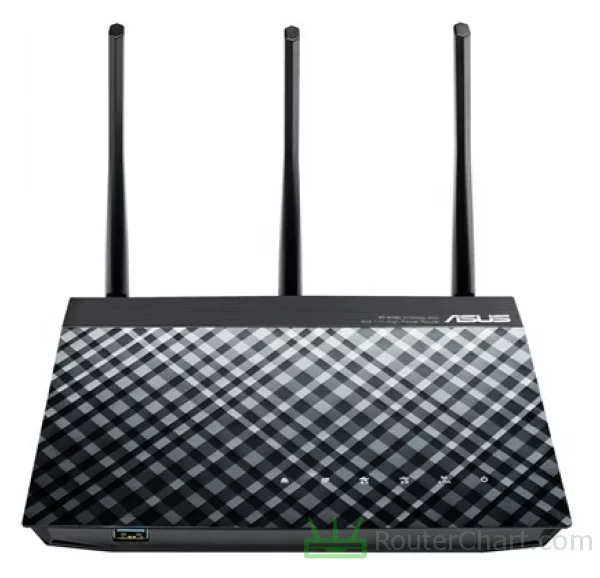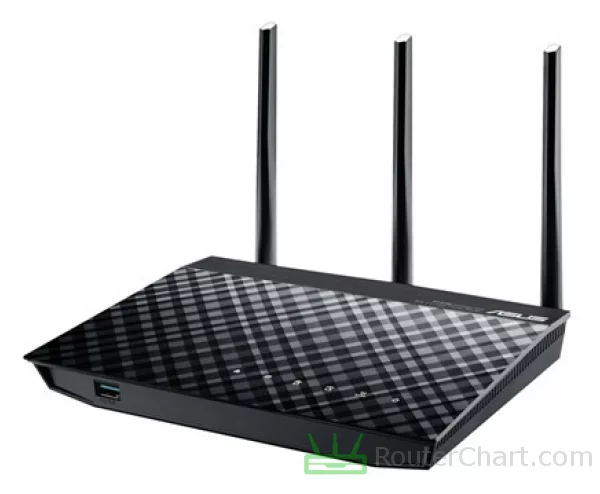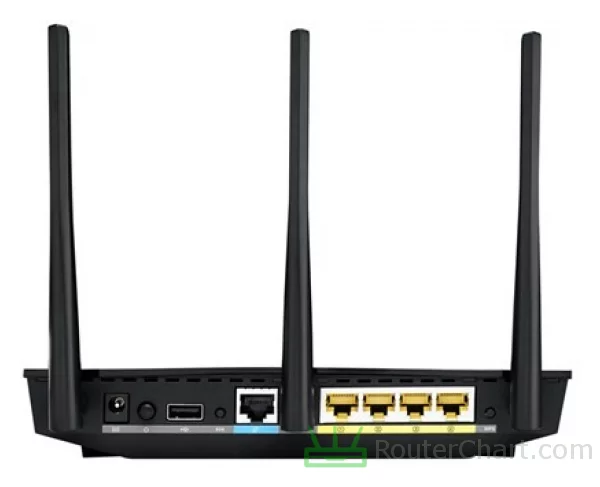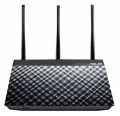Asus RT-N18U WiFi router: Pros and Cons
The Asus RT-N18U (RT-N18U) router released in 2014. It is powered by Broadcom BCM47081A0 @ 800 MHz chipset, 256 MB of RAM and 128 MB of flash. The N600 router is compatible with IEEE 802.11b/g/n standards, and the maximum speed that you can get with RT-N18U is 600 Mbps. The router has 1 x 10/100/1000 Mbps WAN and 4 x 10/100/1000 Mbps LAN ports.
Table of Contents
Our personal experiences and opinions form the basis of this article. We aimed to share insights on a topic, and we hoped others would find it useful and inspirational. The specs below rely on official manufacturer data, but we also consider user reviews. If you noticed any mistakes or missing details about the Asus RT-N18U, please let us know. Furthermore, we strive to deliver a thorough and precise overview.

The RT-N18U router operates on the 2.4 GHz frequency band. It offers decent wireless coverage and works with many devices. You can connect supported USB devices to the router. Asus offers networking solutions that cater to different scales of networks.
Asus RT-N18U specifications
| Brand | Asus |
|---|---|
| Name | RT-N18U |
| Type | RT-N18U |
| Rating | |
| Launch | 2014 |
Body
| Dimensions | 207 x 150 x 37 mm |
|---|---|
| Weight | 520 g |
The dimensions and design of a router can impact its cooling capabilities. Routers with larger dimensions may have more space for internal cooling mechanisms. If you plan to mount your router on a wall or ceiling, the weight can affect the mounting process. It also affects the type of mounting hardware needed.
System
| Chipset | Broadcom BCM47081A0 @ 800 MHz |
|---|---|
| RAM | 256 MB |
| Flash | 128 MB |
| OS | Asus |
| Alternative OS | DD-WRT |
| Power supply | 12 V / 1.5 A |
The Asus RT-N18U router has a Broadcom BCM47081A0 @ 800 MHz processor. The 256 MB of RAM enables the router to handle multiple tasks and processes concurrently. Flash memory retains its data even when the router is off. This allows the router to keep its firmware and settings across reboots. Asus often releases firmware updates. They improve the router's features, security, and bugs. They also add new features.
Using a custom OS on a router has benefits. But, it also has risks. The 12 V / 1.5 A PSU provides power to the router. If it breaks, you can replace it with a new one.

Network
| Protocols | IPv4 IPv6 |
|---|---|
| LAN ports | 4 x 10/100/1000 Mbps |
| WAN ports | 1 x 10/100/1000 Mbps |
| Mobile network | yes, with USB dongle |
| VPN support | PPTP L2TP OpenVPN |
Like many modern routers, the Asus RT-N18U supports many features and tech. They improve your network's connectivity and security. The IPv4 is the fourth iteration of the Internet Protocol (IP). It is the most widely used version of IP on the internet today. The latest firmware supports IPv6. It provides a system to identify and locate computers on networks. Gigabit Ethernet ports support data transfer rates of up to 1 gigabit per second (Gbps).
A Gigabit WAN port is helpful. It is useful when your internet plan supports high speeds. The RT-N18U router supports 3G or 4G dongles, allowing you to connect to a cellular network. OpenVPN is available for many operating systems. These include Windows, macOS, Linux, Android, and iOS. PPTP creates a VPN tunnel between two endpoints. It allows secure communication over an insecure network, such as the internet.
Wireless
| Antennas | 3 x 5 dBi RP-SMA |
|---|---|
| 2.4 GHz | yes |
| 5 GHz | no |
| 60 GHz | no |
| Standards | IEEE 802.11b/g/n |
| Class | N600 |
| Speed | 600 Mbps |
| Transmit power | 20 dBm |
| Security | WEP WPA WPA2 WPS |
| Guest network | yes |
This router has 3 x 5 dBi, RP-SMA antennas. Antennas are key parts of wireless routers. They send and receive radio signals to make wireless connections. Many IoT devices, smart home devices, and older Wi-Fi devices mainly use the 2.4 GHz band. This is a Wi-Fi 4 (802.11n) router. Wi-Fi 4 improved the range and coverage compared to previous Wi-Fi standards.. The top speed, 600 Mbps, is the highest data rate the router can reach. It's the theoretical limit in perfect conditions.
WEP was the first Wi-Fi security protocol. But it is now seen as weak and easy to hack. The introduction of WPA2 (Wi-Fi Protected Access 2) improved upon WEP. It provides stronger security. WPS (Wi-Fi Protected Setup) provides an easy method. It connects devices to a Wi-Fi network.

Connectivity
| USB ports | 1 x USB 2.0 1 x USB 3.0 |
|---|---|
| Print server | yes |
| File server | yes |
The USB 2 port has a maximum theoretical data transfer rate of 480 megabits per second (Mbps). The USB 3 ports provide a fast interface for external storage with data transfer rates of up to 4.8 Gbps. USB print servers let you connect a USB printer to your network. This makes it accessible to many devices. You can connect external storage devices such as USB flash drives or USB hard drives to your router.
Administration
| Default IP | 192.168.1.1 |
|---|---|
| Default username | admin |
| Default password | admin |
Changing the password often is a good security practice. It protects your network and devices from unauthorized access. Changing the default password improves your router's security. It reduces the risk of unauthorized individuals controlling your network.
Pros and Cons
Every router, including this Asus one, has its good sides and not-so-good sides. Let's take a closer look at both to get a full understanding of what this router can do. We'll talk about what it does well and also where it could use some improvements. Just remember, this is just what I think, and you might see things differently.
Pros
- generous memory
- adequate flash
- IPv6 capable
- high-speed LAN port
- high-speed WAN port
- 3/4G USB modem capable
- supports OpenVPN
- WPS friendly
- USB 2 compatible
- USB 3 compatible
- printserver functionality
- fileserver operation
Cons
- missing Wi-Fi 6 support
- lacks Wi-Fi 5 compatibility
- reduced Wi-Fi bandwidth
- incompatible with WPA3
Asus RT-N18U photos




If there’s information about the Asus RT-N18U that you would like to see on this site, then write to us.

